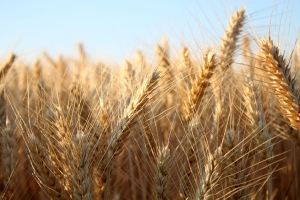Towards the positional cloning of 4HL stripe rust resistance quantitative trait loci in barley. Development of a BAC library

In collaboration with:
-
Dr. Gisella Orjeda
Universidad Peruana Cayetano Heredia
Departemento de Bioquimica, Biologia molecular y Farmacologia
Av. Honorio Delgado 430
Lima- Peru
Phone : (51-1) 319-0000 anexo 2701
E-mail : gorjeda@upch.edu.pe
-
Diego Pignataro Lopez
Universitad Peruana Cayetano Heredia
Departemento de Bioquimica, Biologia molecular y Farmacologia
Av. Honorio Delgado 430
Lima- Peru
E-mail: jose.pignataro.l@upch.edu.pe
Website : http://www.upch.edu.pe/upchvi/portada.asp
Abstract
Barley stripe rust (caused by Puccinia striiformis f.sp. hordei) (BSR) is an important disease of barley that has caused serious yield losses in Europe, in the Asian subcontinent, and in countries as Peru in South America with losses of over 50% of the yield. The R genes provide higher but less durable resistance than the quantitative trait loci. Consequently, exploring quantitative or partial resistance has become a favourable alternative for controlling disease. Three Quantitative Trait Loci (QTL) for BSR have been mapped and their effects validated in an isoline population. Our group at Cayetano Heredia University (UPCH, Perú) is interested in the positional cloning of the 4HL stripe rust resistance quantitative trait loci. In order to get this final objective, we plan to: (1) Develop a Double Haploid population, with microspore culture technique from the F1 between a susceptible phenotype (Baronesse) and a resistant phenotype (Bil47). The Bil7 genotype is almost the same than Baronesse genotype, but he has a fragment of 15cM which has been identified for the resistant character. This segment comes from a resistant genotype (BCD47). (2) Use the synteny between barley and rice to find more markers that could be closer to the gene(s), based on the synteny observed between chromosome three of rice and the region that contains the QTL located in chromosome 4H in barley. (3) Construct a BAC library to refine our work and identify the resistant gene(s) for barley stripe rust located in the QTL responsible for this specific trait. This library will give us an indispensable tool for the integration of physical and genetic maps, the fine mapping QTL and mapped based cloning genes located in the QTL of our interest.
CNRGV involvement
Responsible : Arnaud Bellec / Nicolas Helmstetter
- BAC library construction

